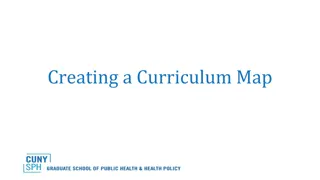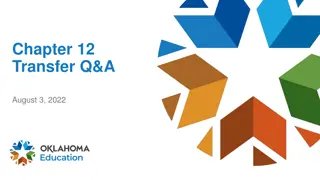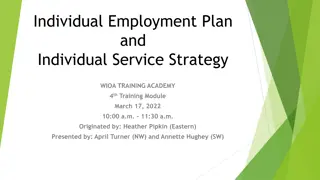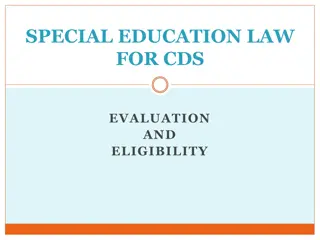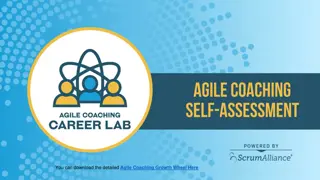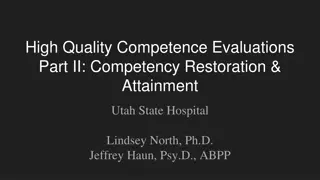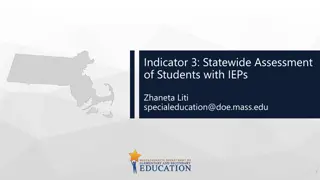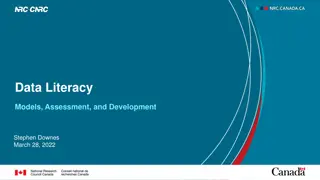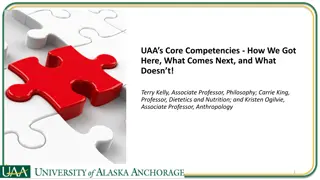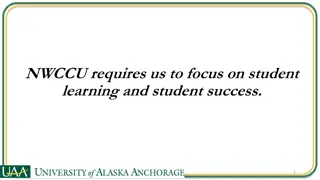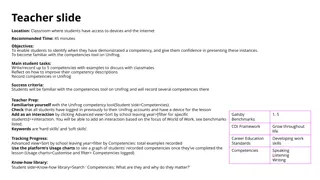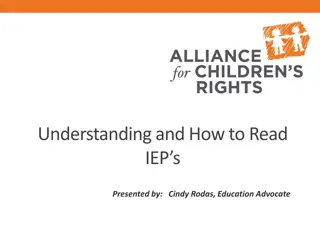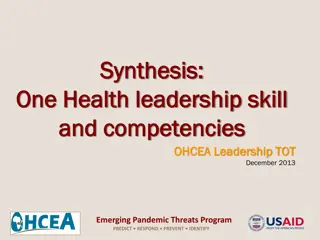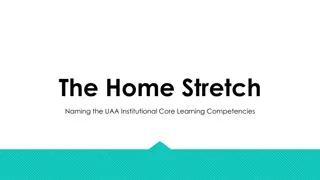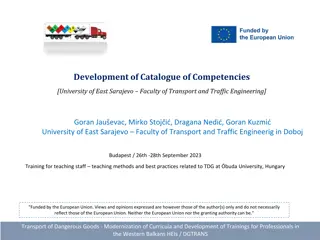Understanding Competency-Based IEPs and Core Competencies for Parents
This overview explores Competency-Based IEPs, focusing on strengths, interests, and goals while involving parents, teachers, and students. It emphasizes aligning with peer curriculum, using authentic assessment, and being responsive to student needs. Core competencies such as communication, critical thinking, and personal/social awareness are highlighted as essential skills for student success beyond school. Parents, teachers, students, and case managers play vital roles in supporting these competencies.
Uploaded on Oct 06, 2024 | 0 Views
Download Presentation

Please find below an Image/Link to download the presentation.
The content on the website is provided AS IS for your information and personal use only. It may not be sold, licensed, or shared on other websites without obtaining consent from the author. Download presentation by click this link. If you encounter any issues during the download, it is possible that the publisher has removed the file from their server.
E N D
Presentation Transcript
Competency-Based IEPs An Overview for Parents Syos;ys let s th;ale, lets emo;t One Heart, One Mind, working together for a common purpose.
The Basics Competency-Based IEPs Are strengths based Identify interests, identities and goals as well as barriers, supports and strategies Include input from parents, teachers and students
The Basics Competency-Based IEPs Align with the curriculum of their peers Use authentic assessment Are responsive to student needs
What are Core Competencies? They are skills we want our children to have for life in general. Communication Social Cultural Thinking
Core Competencies are the skills that all students need to develop for success in life beyond school. are part of all areas of learning. Communication, Thinking and Personal and Social
Communication Communicating Collaborating share information, experiences, and ideas work together towards common purposes and accomplish common goals understand ways to communicate explore the world around them
Critical Thinking Creative examine their own thinking and that of others having ideas making judgments based on reasoning reflection on the value of ideas to themselves or others look at options and make decisions making ideas a reality
Personal and Social Personal Awareness and Responsibility Positive Personal and Cultural Identity connecting personal & social behaviour and well-being knowing what helps them have a healthy sense of themselves (family background, heritage, language, beliefs, and perspectives)
What is your role? Parents Teachers Students Case Managers
Case Managers Connect with classroom teachers to see which Core Competencies they will be focusing on Connect with parents and students for input into the goals May support teachers as they work with their class to develop goals Collate the information and write the IEP
Teachers Determine which Core Competencies their class will work on and how they will assess them Help students select Core Competency goals Connect with support staff to see how they can work together
Parents Provide input into the IEP Your child s strengths and areas of need What you think might be best for your child to work on Support your child as they work to achieve the Core Competency goal they set
Students Provide input into the IEP What they see as their strengths and areas of need How they prefer to learn / what they need to learn best What they think would be a good goal for them to achieve
Social Awareness and Responsibility A goal might sound like this: I can interact with others and my surroundings respectfully BY solving problems myself and asking for help when I need it.
Social Awareness and Responsibility Or this: I can interact with others and my surroundings respectfully BY building relationships and working and playing cooperatively
Critical Thinking A goal might sound like this: I can gather and combine new evidence with what I already know to develop reasoned conclusions, judgements or plans BY using strategies for accessing prior knowledge to support new learning.
Creative Thinking A goal might sound like this: I can get new ideas or reinterpret others ideas in novel ways BY using my artistic skills to help me express my learning.
What about the curriculum? Some students will also have CURRICULAR goals around what they will learn in subject areas. These may be: Supplemental or Replacement
If your child DOES NOT have a cognitive disability but may need some extra support, they may have Supplemental Goals in their IEP. These are goals IN ADDITION TO grade level curriculum For students with Supplemental Goals, learning will be communicated through the Provincial Proficiency Scale (K-9) and letter grades (10-12).
Supplemental Curricular Goal A goal might sound like this: Batman knows language features, structures and conventions including letter knowledge BY recognizing his name, matching letters of names of people he knows.
If your child DOES have a cognitive disability, they may have Replacement Goals in their IEP. These goals ARE INSTEAD OF grade level curriculum Students are assessed based on their replacement goals.
Replacement Curricular Goal A goal might sound like this: Robin knows sacred texts, traditions and narratives of different cultures BY identifying traditions and important events in his culture.
For more information, please contact: Your child s school (teacher, case manager or principal) Student Services






